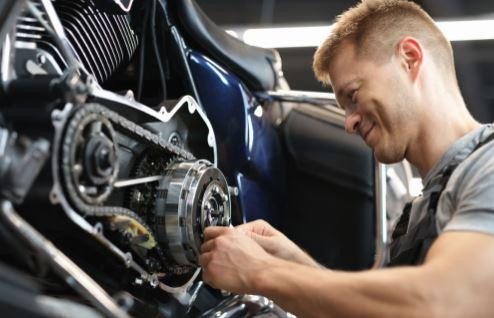More from tavernermotorsports tavernermotorsports
More in Politics
Related Blogs
Archives
Social Share
Tips For Replacing A Motorcycle Clutch
Posted By tavernermotorsports tavernermotorsports
Body
Replacing a motorcycle clutch is a task that, while challenging, can be immensely rewarding and save a significant amount on professional repair costs. For the dedicated enthusiast, Taverner Motorsports offers a comprehensive guide to navigating this essential maintenance procedure, ensuring your bike continues to perform at its best. Here's how to tackle a clutch replacement with confidence, detailed in the spirit of Australian expertise and precision.
Understanding the Clutch System
The clutch is a crucial component of your motorcycle's transmission system, allowing you to smoothly engage and disengage the engine from the drivetrain. It's comprised of multiple parts, including the clutch plates, springs, and a pressure plate. Recognising signs of wear, such as slippage, hard shifting, or a sticking clutch lever, can indicate it's time for a replacement.

Preparatory Steps
Safety and Workspace: Begin by ensuring a clean, well-lit workspace with enough room to maneuver around your motorcycle. Safety gear, such as gloves and eye protection, is recommended to protect against accidental spills or debris.
Tool Assembly: Gather all necessary tools before starting. This typically includes a set of socket wrenches, screwdrivers, and a clutch holding tool or similar to prevent the clutch from spinning during disassembly.
Disassembling the Clutch
- Drain the Oil: If your motorcycle's clutch components are housed within the engine casing that contains oil, you'll need to drain this first to avoid a mess.
- Remove the Clutch Cover: Carefully unscrew and remove the clutch cover. This step might require a new gasket when reassembling, so have one ready.
- Release the Clutch Springs: Unscrew the bolts holding the clutch springs in a cross pattern to evenly release the tension.
Replacing the Clutch
Inspect and Replace: With the pressure plate and springs removed, you can now access the clutch plates. Inspect these for wear and replace them with new ones if necessary. It's often advisable to replace the whole set rather than individual plates for better performance.
Reassembly: Once the new plates are in place, reassemble the pressure plate and springs, ensuring even tension when tightening the springs. Replace the clutch cover with a new gasket to prevent oil leaks.
Final Checks and Adjustments
Refill Engine Oil: If you drained the oil, now is the time to refill it according to your motorcycle's specifications.
Clutch Adjustment: Finally, adjust the clutch cable according to your motorcycle's manual to ensure smooth engagement and disengagement.
Replacing a motorcycle clutch is a detailed process that requires patience and attention to detail. However, with the right preparation and tools, it's a manageable task that can greatly enhance your motorcycle's performance and longevity. Remember, if you're ever in doubt or need specific advice, the team at Taverner Motorsports is always ready to assist, ensuring your ride is in top condition for the road ahead.










Comments